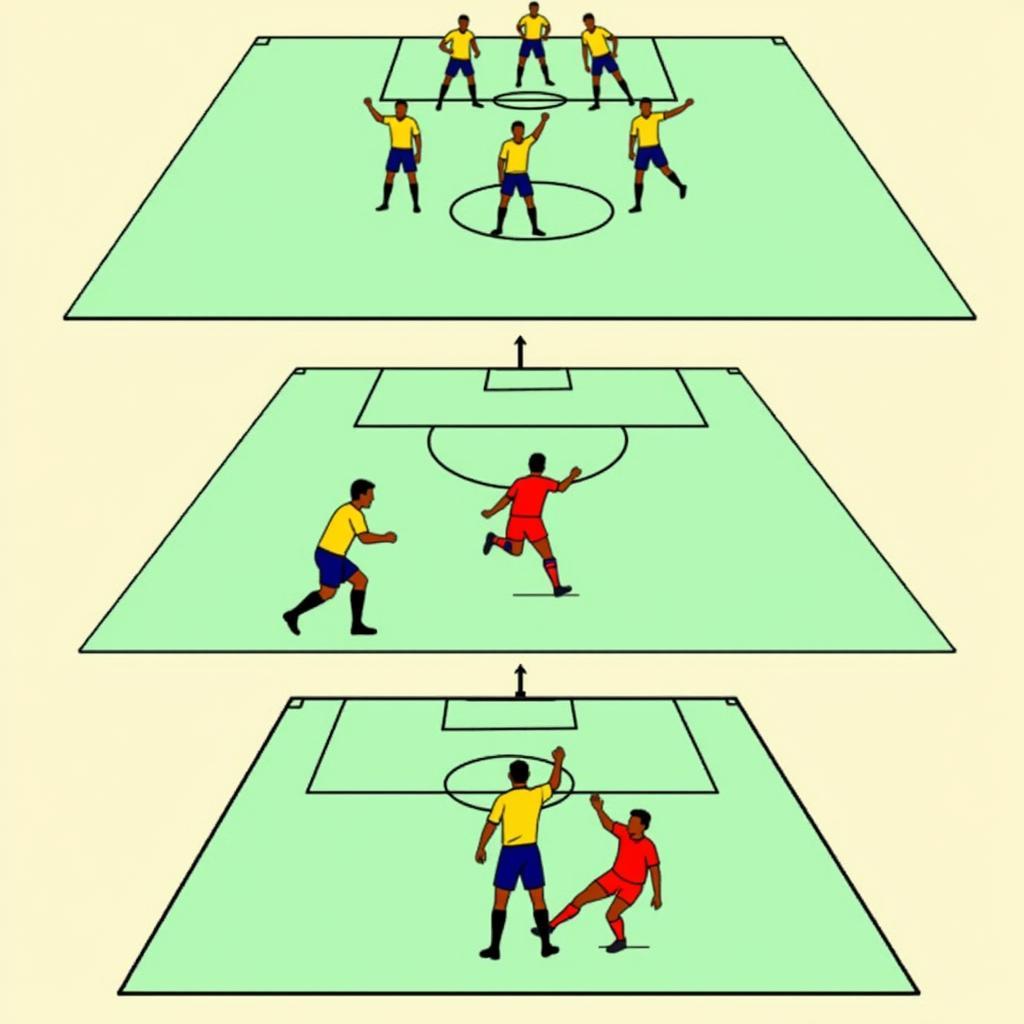Overload Hockey: Mastering the Power Play
January 4, 2025Overload Hockey is a crucial power play strategy that can dramatically increase scoring opportunities. It focuses on creating a numerical advantage on one side of the ice, overwhelming the penalty kill unit and opening up passing lanes for quick, decisive shots. This article delves into the intricacies of the overload, exploring its benefits, execution, and counters.
Understanding the Overload System in Hockey
The overload power play system revolves around positioning the majority of offensive players on one side of the ice, typically the strong side. This creates a localized 2-on-1 or even 3-on-2 advantage, forcing the penalty kill to shift their coverage and potentially leaving the weak side vulnerable. The overload relies heavily on quick puck movement, precise passing, and one-timers to exploit the congested defensive zone.
This concentration of players can lead to confusion and hesitation within the penalty kill, creating scoring chances. Successfully executing the overload requires excellent communication and puck skills, as well as an understanding of how to exploit the created space.
Benefits of the Overload Hockey Strategy
The overload offers several advantages on the power play. Firstly, it creates high-quality scoring chances by concentrating offensive firepower in a small area. This often leads to one-timer opportunities and deflections in front of the net. Secondly, the overload can force the penalty kill to overcommit to one side, leaving the weak side open for a quick cross-ice pass and a shot.
Another benefit of the overload is its ability to draw penalties. The congested area often leads to stick infractions and tripping penalties as the penalty killers struggle to maintain control. This can result in a 5-on-3 advantage, further increasing the likelihood of scoring.  Overload Hockey Penalty Draw Scenario
Overload Hockey Penalty Draw Scenario
Executing the Overload: Key Elements and Tactics
Successful execution of the overload hinges on several key elements. Quick puck movement is paramount, preventing the penalty kill from collapsing on the puck carrier. Crisp, accurate passing is essential to exploit the tight spaces and set up scoring opportunities. Players must be comfortable receiving and shooting one-timers, as these are often the most effective way to capitalize on the overload.
Positioning is also crucial. Players should be aware of their teammates’ locations and anticipate passing lanes. The player at the point should be ready to distribute the puck quickly and accurately to the players on the half-boards, who can then feed the puck down low or across the ice for a one-timer.
Countering the Overload: Defensive Strategies
While the overload can be a potent offensive weapon, it’s not without its vulnerabilities. One effective counter is aggressive pressure on the puck carrier, disrupting the flow of the power play and forcing turnovers. Another strategy is to anticipate the cross-ice pass and intercept it, transitioning quickly to offense.
Penalty kill units can also employ a zone defense, focusing on blocking passing lanes and clearing the puck out of the zone. Effective communication and disciplined positioning are essential for successful defense against the overload.
Conclusion: Unleashing the Power of the Overload in Hockey
Overload hockey is a powerful tool that can significantly enhance a team’s power play effectiveness. By mastering the principles of quick puck movement, precise passing, and strategic positioning, teams can create numerous scoring opportunities and overwhelm the penalty kill. boost for hockey team after penalty While there are defensive counters, understanding and anticipating these strategies allows teams to adapt and continue to pressure the opposition. ice hockey offensive strategies Mastering the overload is key to unlocking offensive potential and dominating on the power play.
FAQ
- What is the main goal of the overload power play system?
- What are the key elements of a successful overload?
- How can the overload draw penalties?
- What are some common defensive strategies against the overload?
- Why is quick puck movement important in the overload?
- What role does positioning play in the overload?
- How can a team adapt to defensive counters to the overload?
Common Situations and Questions
- Situation: The penalty kill is aggressively pressuring the puck carrier. Question: How can the power play unit maintain possession and create passing lanes under pressure?
- Situation: The penalty kill is anticipating the cross-ice pass. Question: What alternative plays can the power play execute to exploit the penalty kill’s positioning?
Further Exploration
For more information on hockey strategies, check out other articles on our website.
Contact Us
When you need support, please contact us by phone: 0915117113, Email: [email protected] Or visit us at: Group 3, Binh An Hamlet, Phu Thuong, Vietnam, Binh Phuoc 830000, Vietnam. We have a 24/7 customer service team.